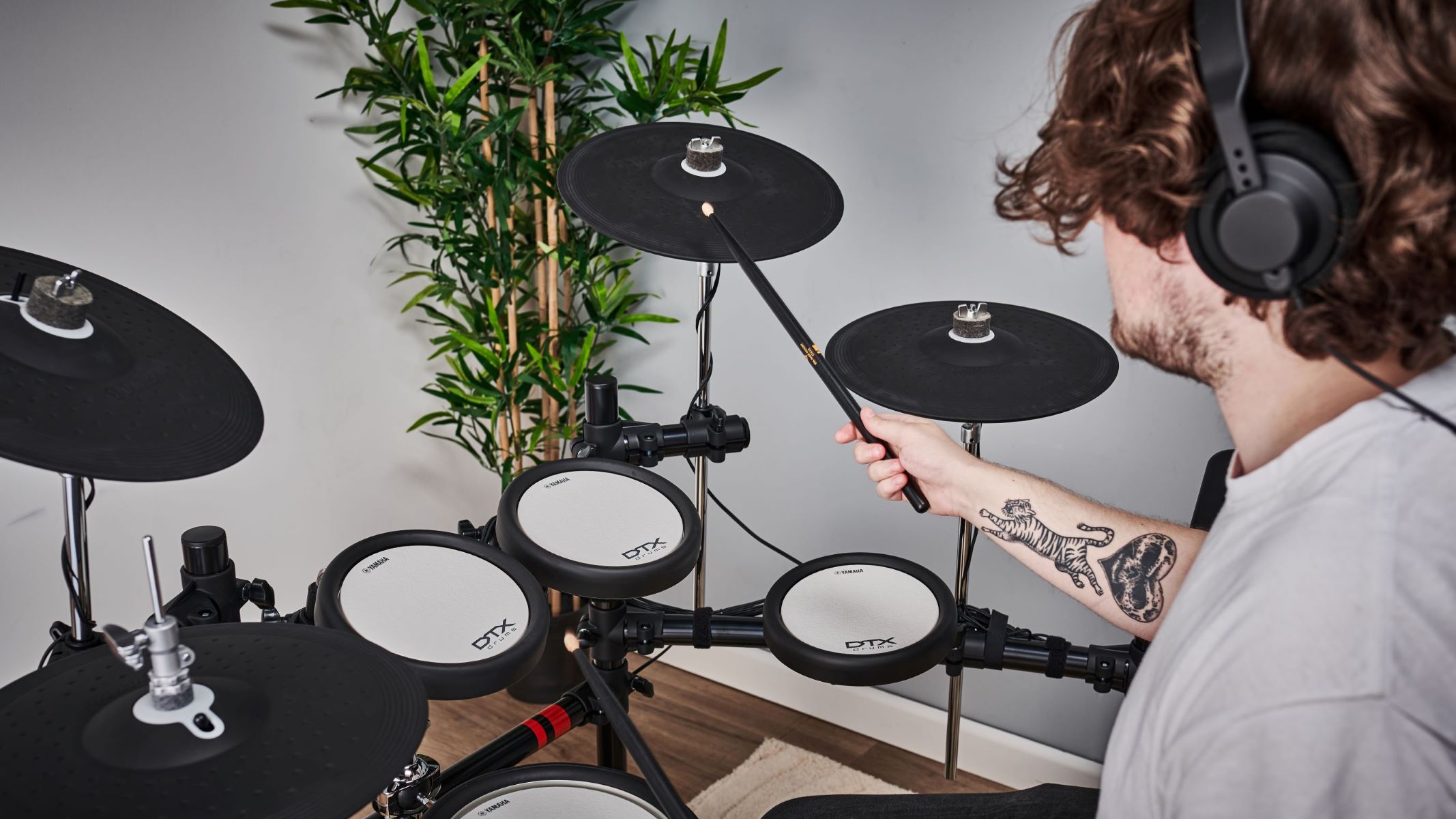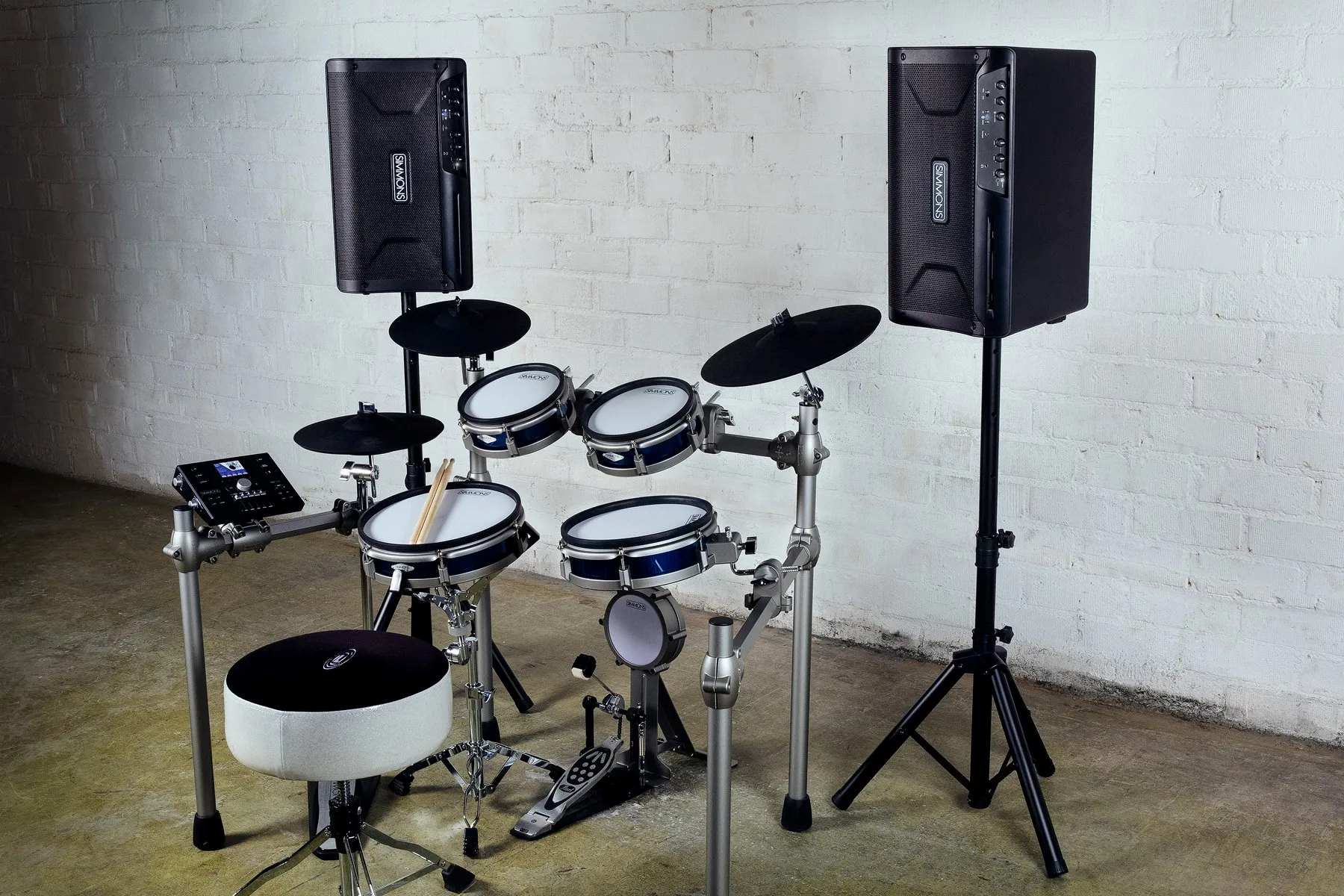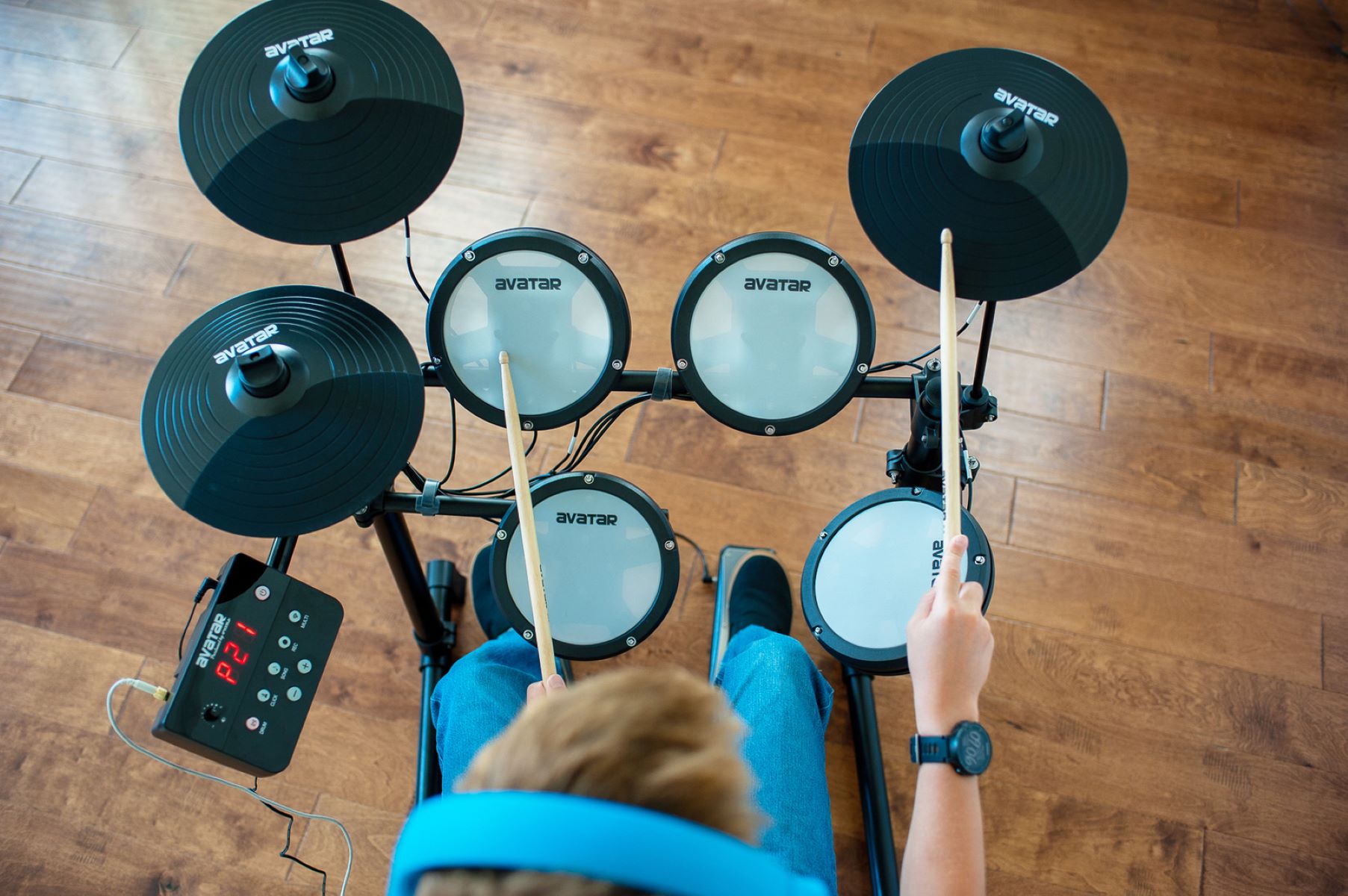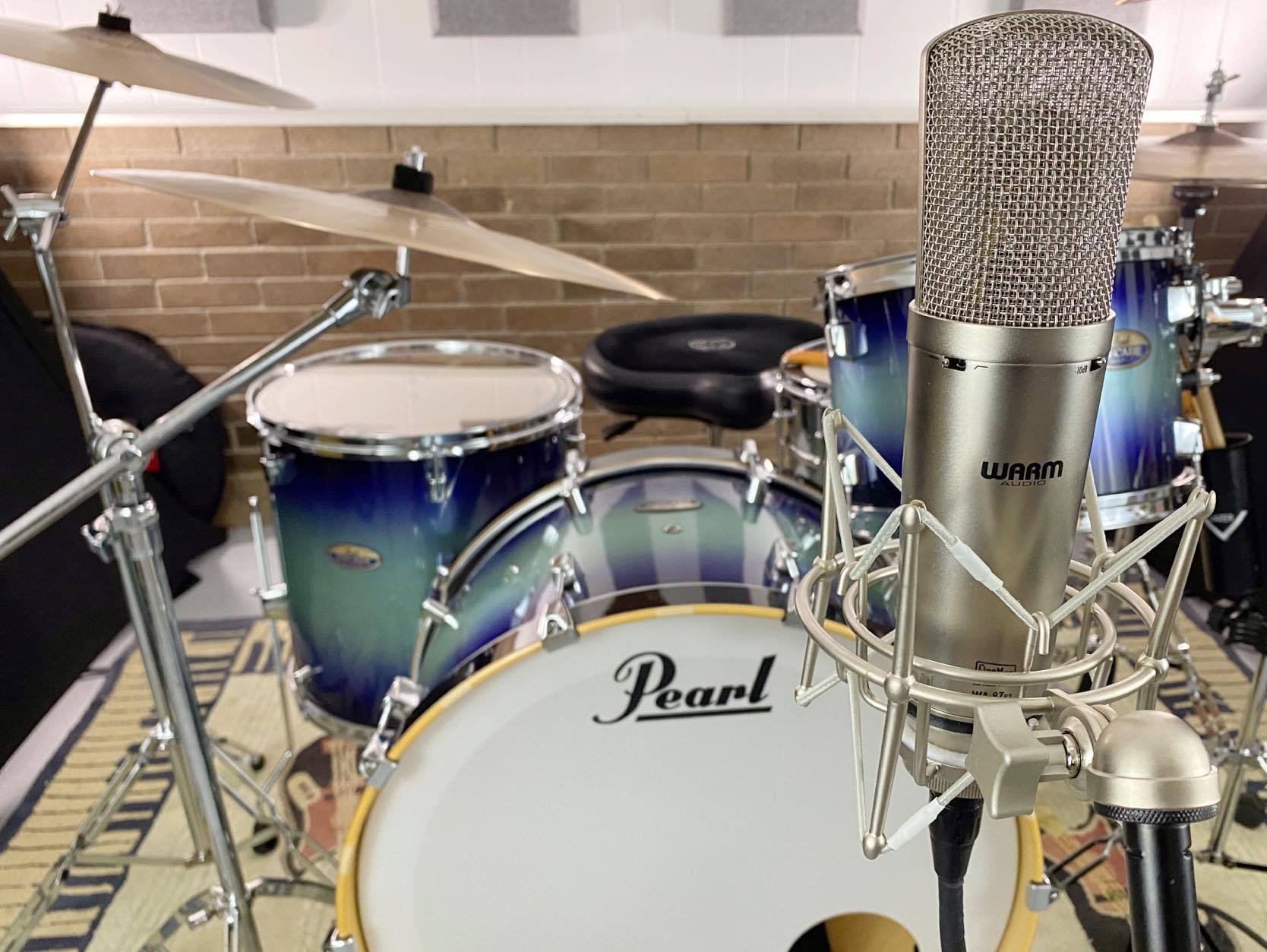Home>Instruments>Drums>How To Record Electronic Drums
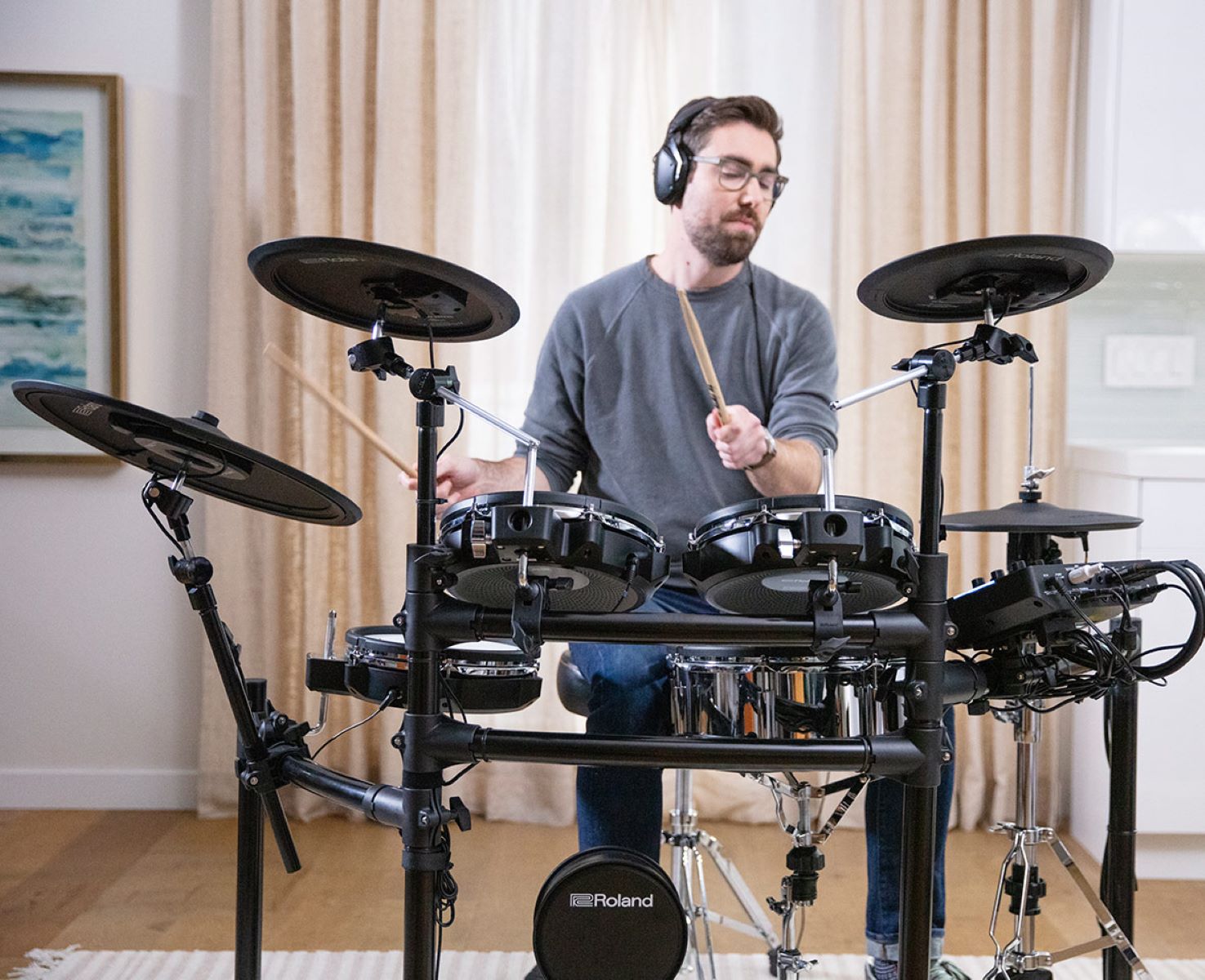

Drums
How To Record Electronic Drums
Modified: February 16, 2024
Learn how to record electronic drums and achieve professional sound quality. Discover essential tips and techniques for capturing the perfect drum tracks.
(Many of the links in this article redirect to a specific reviewed product. Your purchase of these products through affiliate links helps to generate commission for AudioLover.com, at no extra cost. Learn more)
Table of Contents
Introduction
Electronic drums have revolutionized the music industry, offering a versatile and convenient way to create powerful rhythms and beats. Whether you're a seasoned drummer or a passionate music producer, capturing the dynamic sound of electronic drums through recording is essential for producing high-quality tracks. In this comprehensive guide, we will delve into the intricacies of recording electronic drums, providing valuable insights and practical tips to help you achieve professional-grade recordings.
When it comes to recording electronic drums, there are several key factors to consider, including the setup of your drum kit, the selection of recording equipment, microphone positioning, level adjustments, and the recording and editing process. By mastering these fundamental aspects, you can unleash the full potential of your electronic drum kit and produce captivating drum tracks that resonate with your audience.
Throughout this guide, we will explore the step-by-step process of recording electronic drums, from the initial setup to the final editing stages. Whether you're aiming to capture the thunderous energy of rock beats, the intricate patterns of jazz, or the pulsating rhythms of electronic music, the techniques and principles outlined in this article will empower you to harness the true essence of electronic drumming in your recordings.
With the right knowledge and approach, you can elevate your drum recordings to new heights, infusing them with clarity, depth, and character. So, let's embark on this enriching journey into the art of recording electronic drums, where creativity meets technical prowess to produce mesmerizing sonic experiences.
Setting Up Your Electronic Drum Kit
Before delving into the recording process, it’s crucial to ensure that your electronic drum kit is properly set up to deliver optimal performance and sound quality. Start by assembling your electronic drum set in a well-lit and comfortable space, allowing ample room for maneuverability and access to power outlets. Position the drum pads, cymbals, and kick pedal according to your playing style and ergonomic preferences, ensuring that each component is securely fastened and aligned for seamless playability.
Once the physical setup is complete, it’s essential to connect your electronic drum module to an audio interface or mixer using appropriate cables. This connection facilitates the transfer of audio signals from the drum kit to the recording equipment, enabling you to capture the nuanced dynamics and nuances of your drumming performance. Additionally, consider integrating a click track or metronome into your setup to maintain consistent timing and rhythm during recording sessions, enhancing the cohesion and precision of your drum tracks.
Furthermore, take the time to fine-tune the settings and parameters of your electronic drum module, such as sound presets, sensitivity adjustments, and trigger settings. By customizing these configurations to suit your playing technique and musical style, you can optimize the responsiveness and tonal characteristics of your drum kit, laying the foundation for expressive and impactful recordings.
As you prepare your electronic drum kit for recording, pay attention to the acoustic environment in which it is situated. Minimize ambient noise and potential sources of interference, ensuring that the recording space is acoustically treated to mitigate reverberations and unwanted sound reflections. This proactive approach contributes to the clarity and fidelity of your drum recordings, allowing the inherent textures and nuances of each drum sound to shine through without distortion or coloration.
Ultimately, the meticulous setup of your electronic drum kit forms the cornerstone of successful drum recording endeavors, influencing the overall sound quality and playability of your instrument. By attending to these preparatory steps with care and precision, you can create an environment that nurtures creativity and facilitates the seamless translation of your drumming prowess into captivating recordings.
Choosing the Right Recording Equipment
When embarking on the journey of recording electronic drums, selecting the appropriate recording equipment is pivotal in capturing the nuanced intricacies and dynamic range of your drumming performances. The primary components of your recording setup include microphones, an audio interface, headphones, and recording software, each playing a crucial role in translating the expressive qualities of your electronic drum kit into high-fidelity audio recordings.
First and foremost, consider the selection of microphones tailored specifically for drum recording. Dynamic microphones are commonly favored for capturing the punch and impact of kick drums and toms, while condenser microphones excel in reproducing the shimmering highs and intricate details of cymbals and overhead drum sounds. By strategically positioning these microphones around your drum kit, you can achieve a balanced and immersive sonic representation of each drum and cymbal, enriching the depth and dimension of your recordings.
Furthermore, an audio interface serves as the crucial link between your electronic drum module and the recording software on your computer. It facilitates the conversion of analog audio signals from the drum kit into digital data, allowing for seamless integration with your digital audio workstation (DAW) and providing essential features such as preamps, phantom power, and low-latency monitoring. Choose an audio interface with sufficient input channels to accommodate the simultaneous recording of multiple drum mics, enabling you to capture the full spectrum of your drum kit’s sonic palette.
Equally important is the selection of high-quality headphones designed for monitoring during drum recording sessions. Opt for closed-back headphones that offer excellent isolation and accurate sound reproduction, allowing you to discern the subtle nuances and tonal balance of your drum tracks without external distractions. This focused monitoring environment empowers you to make informed decisions during recording and mixing, ensuring that your drum recordings achieve the desired clarity and impact.
Lastly, invest in reliable recording software that aligns with your specific recording needs and workflow preferences. Look for a DAW that provides robust multitrack recording capabilities, intuitive editing tools, and flexible routing options, empowering you to capture and manipulate your drum performances with precision and creativity. Additionally, explore plugins and virtual instruments tailored for drum processing and enhancement, enriching your recordings with professional-grade effects and sonic sculpting capabilities.
By meticulously selecting and integrating the right recording equipment into your setup, you can elevate the quality and fidelity of your electronic drum recordings, unlocking the full expressive potential of your drumming artistry.
Positioning Microphones for Optimal Sound
Effective microphone positioning plays a pivotal role in capturing the full spectrum of sound produced by electronic drums, ensuring that each drum and cymbal is faithfully represented in the recording. By strategically placing microphones in key locations around the drum kit, you can achieve a balanced and immersive sonic capture that showcases the nuances and dynamics of your drumming performance.
When positioning microphones for recording electronic drums, consider the following techniques to optimize the sound quality and sonic character of each drum and cymbal:
- Kick Drum: To capture the powerful thump and low-end resonance of the kick drum, position a dynamic microphone just outside the drum’s resonant head, angled slightly towards the beater. Adjust the microphone’s proximity to the drumhead to achieve a balanced representation of attack and sustain, capturing the full-bodied impact of each kick drum stroke.
- Snare Drum: Place a dynamic microphone above the snare drum, angled towards the center of the drumhead at a height that aligns with the drummer’s striking position. This placement captures the crispness of the snare wires and the resonant body of the drum, preserving the articulation and tonal richness of the snare drum’s sound.
- Toms: Utilize individual dynamic microphones for each tom drum, positioning them slightly above the drumheads to capture the depth and resonance of each tom’s sound. Adjust the microphone placement to ensure uniform coverage of the drumhead surface, allowing for consistent tonal representation across the entire tom drum set.
- Cymbals and Overheads: Employ condenser microphones or specialized overhead microphones to capture the shimmering brilliance and spatial depth of cymbals. Position these microphones above the cymbal array at a height that provides comprehensive coverage of the entire drum kit, allowing for the capture of ambient room sound and the spatial positioning of individual drum elements within the stereo field.
Additionally, experiment with microphone polar patterns and angles to tailor the capture of each drum and cymbal to your desired sonic aesthetic. For instance, cardioid, supercardioid, or hypercardioid microphone patterns offer focused directionality, minimizing bleed from adjacent drums and cymbals, while omnidirectional patterns capture a more expansive and ambient representation of the drum kit’s sound.
By meticulously positioning microphones to optimize the sonic capture of electronic drums, you can elevate the fidelity and expressiveness of your drum recordings, preserving the intricacies and nuances of your drumming performances with clarity and depth.
Adjusting Levels and Settings
Once the microphones are in position, it’s crucial to focus on adjusting levels and settings to achieve an optimal balance and clarity in your electronic drum recordings. Proper level adjustments and thoughtful configuration of settings contribute to the cohesive blend of individual drum and cymbal sounds, ensuring that each element of the drum kit is accurately represented in the recording.
Begin by setting appropriate input levels for each microphone in your recording setup. Aim to capture robust and clean signals without allowing the input levels to clip or distort, as this can compromise the fidelity and dynamic range of your drum recordings. Utilize the gain controls on your audio interface or preamps to achieve optimal signal strength, monitoring the input levels on your recording software to ensure that they remain within the ideal range during drum performances.
Furthermore, consider the application of compression and equalization to refine the sonic characteristics of individual drum and cymbal tracks. Compression helps to control the dynamic range of drum sounds, enhancing consistency and impact, while equalization allows for precise shaping of the frequency response, accentuating the tonal qualities of each drum and cymbal. Experiment with different compression settings and EQ curves to sculpt the desired tonal balance and punch for your drum recordings, tailoring the sound to suit the musical context and genre.
When adjusting levels and settings for overhead and ambient microphones, focus on capturing the spatial dimension and natural ambience of the drum kit. Fine-tune the balance between direct drum sound and room ambience, leveraging panning and volume adjustments to create a compelling stereo image that conveys the immersive depth and spatial positioning of the drums and cymbals within the recording space.
Additionally, explore the utilization of transient shaping and reverb effects to further refine the impact and spatial presence of your drum recordings. Transient shaping tools allow for precise manipulation of drum attack and sustain, enhancing the clarity and definition of individual drum hits, while tasteful application of reverb contributes to the enveloping sense of space and dimension, adding depth and realism to the overall drum mix.
By meticulously attending to level adjustments and settings, you can elevate the sonic impact and cohesiveness of your electronic drum recordings, crafting a polished and expressive sonic canvas that captures the essence of your drumming performances with finesse and clarity.
Recording and Editing Your Drum Tracks
As you embark on the process of recording your electronic drum tracks, it’s essential to approach the task with a blend of technical precision and creative intuition to capture compelling and expressive performances. Whether you’re laying down the foundation for a new composition or adding dynamic drum tracks to an existing arrangement, the recording and editing phase is where the magic of your drumming artistry comes to life.
Prior to recording, ensure that your recording environment is conducive to capturing pristine audio. Minimize external noise and distractions, and consider utilizing acoustic treatment to optimize the sonic clarity and fidelity of your recordings. With the technical aspects in place, focus on delivering performances that convey the desired energy, groove, and emotion, infusing each drum hit with musical intent and expression.
When recording electronic drums, leverage the multitrack recording capabilities of your digital audio workstation (DAW) to capture individual drum and cymbal elements on separate tracks. This approach provides flexibility and control during the editing and mixing stages, allowing you to refine the sonic balance and dynamics of each drum component with precision.
As you lay down your drum tracks, pay attention to the nuances of your performance, such as ghost notes, dynamics, and accents, ensuring that each drum hit contributes to the rhythmic narrative of the composition. Embrace the iterative nature of recording, allowing for multiple takes and experimentation to capture the ideal drum performance that aligns with the musical vision of the composition.
Following the recording phase, engage in meticulous editing to refine the timing, dynamics, and tonal characteristics of your drum tracks. Utilize editing tools within your DAW to quantize timing discrepancies, adjust velocity levels for nuanced dynamics, and fine-tune the transient response of individual drum hits. This process enhances the precision and coherence of your drum performances, elevating them to a professional standard while preserving the organic feel and groove of your playing.
Moreover, consider the application of creative effects and processing to enhance the sonic impact and character of your drum tracks. Experiment with transient shaping, saturation, and specialized drum processing plugins to imbue your drum recordings with punch, warmth, and presence, enriching the sonic texture and vibrancy of your drum performances.
Throughout the editing phase, maintain a balance between technical refinement and artistic expression, ensuring that the essence of your drumming artistry shines through in the final recordings. Embrace the iterative nature of the editing process, allowing for experimentation and creative exploration to sculpt drum tracks that resonate with emotion and musicality.
By approaching the recording and editing of your electronic drum tracks with meticulous attention to detail and creative insight, you can capture captivating performances that elevate the sonic landscape of your musical productions, infusing them with the rhythmic vitality and expressive depth of your drumming artistry.
Conclusion
Recording electronic drums is a captivating journey that intertwines technical precision with artistic expression, culminating in the creation of dynamic and compelling drum tracks that enrich musical compositions across genres. Throughout this comprehensive guide, we’ve explored the essential steps and considerations involved in capturing the full potential of electronic drum performances through recording.
From the meticulous setup of your electronic drum kit to the strategic positioning of microphones and the thoughtful selection of recording equipment, each aspect contributes to the sonic fidelity and expressive depth of your drum recordings. By embracing the fusion of technical expertise and creative intuition, you can harness the inherent versatility and power of electronic drums to craft captivating rhythmic narratives that resonate with listeners.
As you embark on the recording and editing of your drum tracks, remember to infuse each performance with musical intent and emotion, allowing the nuances of your drumming artistry to shine through in the final recordings. Embrace the iterative nature of the recording process, welcoming experimentation and refinement to sculpt drum tracks that convey the desired energy, groove, and character.
Furthermore, the editing phase offers an opportunity to refine the sonic nuances and dynamics of your drum performances, achieving a balance between technical precision and artistic expression. Engage with the creative potential of effects and processing to enhance the sonic impact and vibrancy of your drum tracks, enriching them with depth, presence, and sonic character.
Ultimately, the art of recording electronic drums transcends the technical intricacies, inviting you to embark on a journey of sonic exploration and creative storytelling. By embracing the fusion of technical expertise and musical expression, you can unlock the full potential of your electronic drum kit, capturing performances that resonate with vitality and emotion, and enriching your musical endeavors with captivating rhythmic foundations.
So, as you venture into the realm of recording electronic drums, remember that each drum hit carries the potential to shape the sonic landscape of your compositions, infusing them with the rhythmic vitality and expressive depth of your drumming artistry. Embrace the journey, and let your drum tracks reverberate with the energy and emotion of your musical vision.

